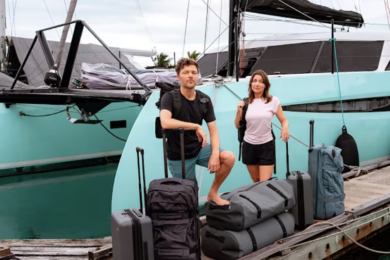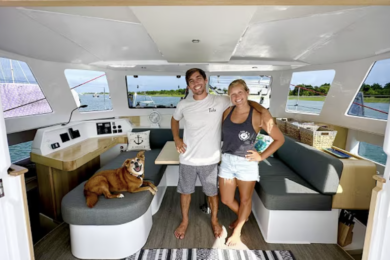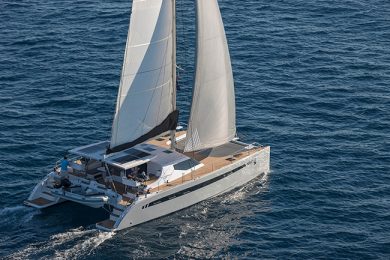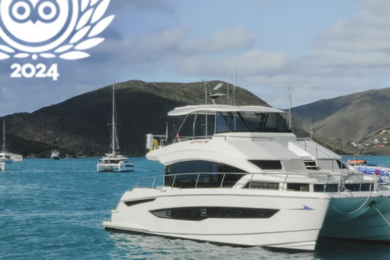 Workers at the team’s base at Pier 80 in San Francisco, Core Builders Composites in New Zealand and Janicki Industries in the Pacific Northwest are targeting July for the launch of the new class of America’s Cup yacht. America’s Cup rules permit teams to launch their first AC72 yacht after July 1.
Workers at the team’s base at Pier 80 in San Francisco, Core Builders Composites in New Zealand and Janicki Industries in the Pacific Northwest are targeting July for the launch of the new class of America’s Cup yacht. America’s Cup rules permit teams to launch their first AC72 yacht after July 1.
“No question the AC72 will be a big step up from the AC45 we are currently racing on the America’s Cup World Series circuit,” says team skipper James Spithill. “The AC45s have proven spectacular; the AC72s will be sensational.”
The AC72 is the new class of America’s Cup yacht that is designed to a box rule, one that sets tight limits on parameters such as length, beam, weight and wingsail area. The team has split production of its yacht between three sites because each is a center of excellence. At Pier 80 in the 34th America’s Cup host city, the team builds the basic molds for the hulls and crossbeams of the catamaran. The molds are then shipped to Janicki Industries, north of Seattle, Wash., where the large structures are machined to fine tolerances. In a process in which Janicki is a world leader, high-tech resin is applied to the molds and then machined to its final shape by a five-axis mill to tolerances finer than the thickness of a sheet of paper.
“We’ve worked with Janicki for nearly 10 years because every little fraction of accuracy you achieve accumulates. Greater accuracy means less material and less weight. That means the boat is built precisely as the designers conceived it,” said shore team manager Mark Turner.
ORACLE Racing’s hull molds were refined at Janicki’s plant in the same mill that handles secret work for some of the largest manufacturers of civilian and military aircraft and aero structures in the world. Once the finished molds are back at Pier 80, a boatbuilding team begins to laminate the high-strength, carbon-fiber cloths with epoxy resin. Since last year teams have raced the AC45 catamaran in the America’s Cup World Series, a circuit of events in Europe and the US. The AC45 is a one-design yacht, meaning that each is built by a single manufacturer to the same exact specifications. CBC built the fleet of AC45 catamarans that were designed as a means to fast-track teams’ understanding of wingsail technology. The AC45 will continue on the World Series into next year. The AC72 will feature next summer in the Louis Vuitton Cup Challenger Series (July 4-Sept. 1, 2013) and America’s Cup Finals (Sept. 7-22, 2013). The step up in performance will be phenomenal.
“In the AC45 class, the boats are the same so the results are often determined by the sailors who made the better decisions and handled their boat better,” said ORACLE Racing CEO Russell Coutts, the all-time America’s Cup winner. “In the AC72, teams will develop their own design so technology plays a bigger role. Compared to any previous America’s Cup, the design rule is relatively tight. Technology will produce a faster, smarter boat, but not a ‘golden bullet’ design.”
Design comparison:
AC45 Hull Length 44 feet
Maximum Beam 22.6 feet
Wing Height 80.38 feet*
Maximum Draft 8.8 feet
Displacement 3,086 pounds
Wing Area 1,008.58 square feet
Jib Area 323 square feet
Gennaker Area 1,076 square feet
Crew 5@187 pounds/per
*Note: The stock wing height for the AC45 is 21.5 m/70.5 feet
AC72 Hull Length 72.18 feet
Maximum Beam 45.93 feet
Wing Height 131.23 feet
Maximum Draft 14.44 feet
Displacement 13,007 pounds
Wing Area 2,798 square feet
Jib Area 1,076 square feet
Gennaker Area 4,305 square feet
Crew 11@203 pounds/per
For more information, go to www.oracleracing.com.















